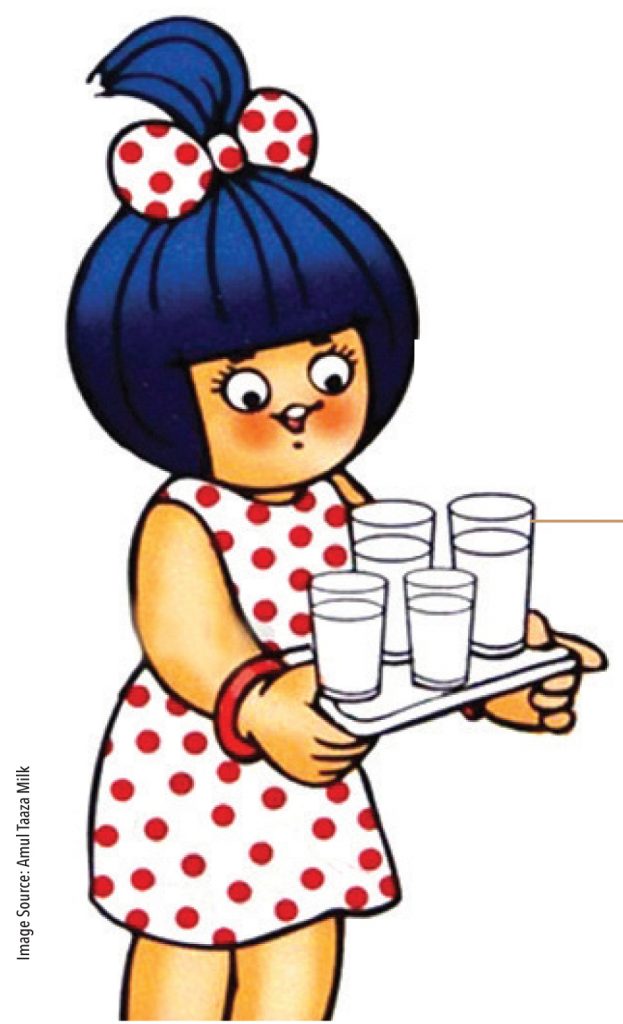In the light of sharply falling global dairy prices and to understand the impact on India’s market, GV talked to Mr Rupinder Singh Sodhi, the MD of Gujarat Cooperative Milk Marketing Federation, known for its iconic Amul brand. He shares his insights on not only India’s position in the global scenario but also on the challenges and opportunities for India’s dairy industry.
A. The Indian dairy market is more or less unchanged in terms of growth. Consumption of milk will grow in India. Per capita consumption of milk is still quite low at around 310gm Volume growth for base milk is around 4-5% and value-added products are growing at around 10%. The challenge now is value growth, as milk prices have declined both in the domestic and international markets.
In Maharashtra, procurement prices for milk have reduced to as low as Rs 15-16 per litre from Rs 25-27 earlier. The situation in Maharashtra is particularly exacerbated because of lack of a strong cooperative
A. Domestic pricing scenario is quite depressed. International prices impact prices in India, as milk can be stored and transported in powdered formats like skimmed milk powder. India produces surplus milk and exports milk powder. International prices for skimmed milk powder have declined to around US$ 1800 per metric tonne from US$ 4500. We are not able to export, so prices are correcting here too. In India, skimmed milk powder prices have declined to Rs 130 from Rs 270 per kg. This is a drastic reduction, which is impacting farmers. In some of the states, the situation is particularly precarious – in Maharashtra, procurement prices for milk have reduced to as low as Rs 15-16 per litre from Rs 25-27 earlier. The situation in Maharashtra is particularly exacerbated because of lack of a strong cooperative. In Gujarat, the situation is much better because our procurement prices are significantly higher.
A. Generally low milk prices are not beneficial for anybody in the long run. Even in Maharashtra, private dairies have reduced their purchases significantly and cooperatives have to buy 18-19% more milk. The chief victims of low milk prices are animals, which are not given enough feed because the cost vs. returns are not favourable.
A. Karnataka (Nandini brand) is doing well because government provides milk subsidy. Rajasthan, Punjab, and Kerala also seem to be doing well. Maharashtra, north UP, and some parts of Haryana are not doing so well.
An ‘only value-added’ products model suffers from the shortcomings of inability to generate sufficient scale. The most critical component for success in the dairy industry is a super-efficient supply chain.
A. Milk has two components – fat and SNF (solid non-fat). Fat can be used for making butter or ghee but SNF has to be sold separately. If one relies only on value-added products, then the cost of these products will be very high because of supply-chain costs. An ‘only value-added’ products model suffers from the shortcomings of inability to generate sufficient scale. Selling base milk provides the necessary scale and the supply-chain leverage that can be exploited to bring down costs. Our cost structure is the leanest in India in spite of having world-class factories and supply chain – because of the economies of scale. The problem with an only value-added products model is getting the desired quantity of milk for establishing the scale. The problems outweigh benefits for such as model – at least currently.
A. Firstly, for developed markets the consumption of milk in the form of cheese is very high and secondly, the market structure is dominated by private dairy players. Hence, margins in the dairy business are quite high. So selling only cheese can be a lucrative business model because there are economies of scale. In India, cheese is a very small portion of the overall consumption.
A. Nestle has been in India even before the cooperatives.It is successful in infant nutrition because of regulations. Apart from infant nutrition, it has developed successful brands in dairy whitener and condensed milk. Nestle has had an early-mover advantage, which it has capitalised, but new players trying to sell only value-added products are struggling.
A. The most critical component for success in the dairy industry is a super-efficient supply chain. For example, we measure supply chain costs in paise per litre – we have drilled down cost efficiencies to that level. Secondly, dairy is a very sensitive industry because of the large number of people involved, especially the farmers. Farmers should be happy and get good prices – this keeps the ecosystem running smoothly, otherwise there will be disruptions of all sorts. Rural incomes are declining and animal feed is getting poorer, which in turn impacts both quality and quantity – this vicious cycle has to be avoided. Also, dairy is an industry of scale – so one has to be a player with a long-term focus. Organic growth, tapping the right markets, owning your marketing channel, and building brands will be the other components for success.
A. GCMMF does not have any working capital challenges. Our business is all cash-and-carry. Even with institutional buyers, our terms are similar. Therefore, we have not had working-capital challenges. For other players this could be a challenge,especially if a large part of their sales are to large institutions on difficult terms.

The challenge now is value growth, as milk prices have declined both in the domestic and international markets.
A. Patanjali is a strong brand and Baba Ramdev has done a commendable job in growing the ghee category, even though he sells the product at a significant premium. We will see how the brand grows, but its start has been promising.
Subscribe to enjoy uninterrupted access